This article is part of RPR’s “Everything You Need To Know About Web AR” education series and focuses specifically on Web AR Marketing and Advertising.
In today’s attention economy, brands are looking for any opportunity to stand out amongst the sea of digital content that floods consumer’s devices. Imagine your target customer for a moment. Think about how many ads and interactions she has with various brands over the course of a day. If you guessed between 4,000 to 10,000 ads per day, you’d be right.
This is exactly why many traditional advertising strategies get lost in the noise or caught in competition with competitors of “who can shout louder.” This is where Web AR Marketing and Advertising come to the rescue.
Whether she’s checking her email with morning coffee, scrolling Instagram during her commute to work, or searching for the right gift for Father’s Day on Google, brands are paying a premium just to reach her—let alone engage her.
For that brief moment that you’ve managed to present your brand in front of her, how are you going to make sure her experience is engaging and memorable, improving her overall perception of your brand?
Let’s chat
Not sure where to start? Book a free strategy call with us to get started! No strings attached.
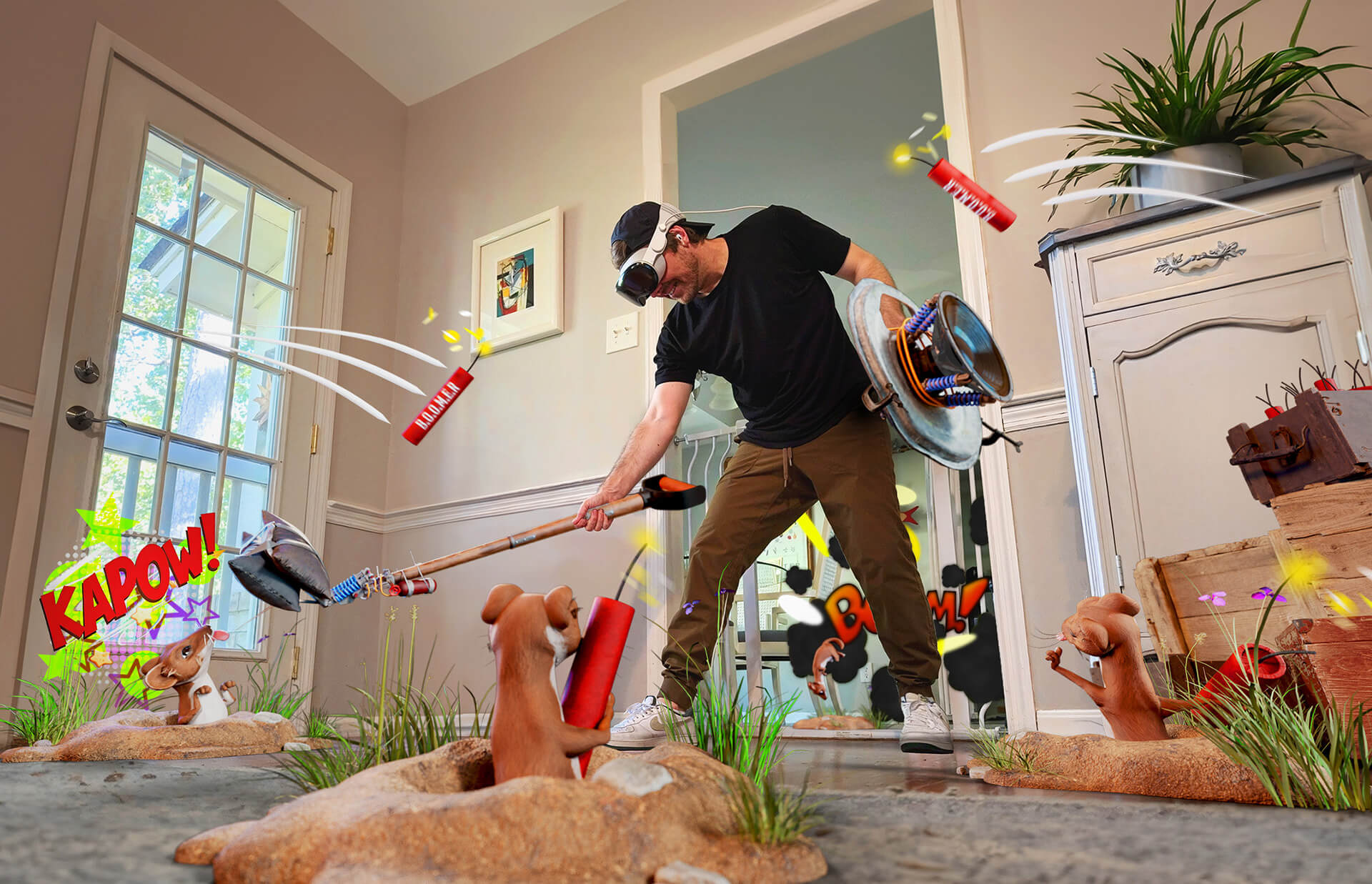
Marketing Benefits behind Web-based AR
Enter Web AR. As the technology for developing AR experiences matures, you can now seamlessly deploy an AR experience to your customers across your preferred channels from social media to email.
Within a few clicks, your customer can interact with your brand in the physical world, view products at home, try-on clothing items like sunglasses, or watch the founder of the brand talk and walk across your kitchen table.
This powerful and engaging experience is the reason why the memory response to AR is 70% higher than non-AR and why brands using AR ads are seeing disproportionate results like a 520% increase in intent to purchase over the next six months (95x the benchmark for non-AR).
These metrics are enough to make any marketing team jump for joy and join the AR bandwagon. And yet, adoption still does not reflect that sentiment. So, what’s the hold up?
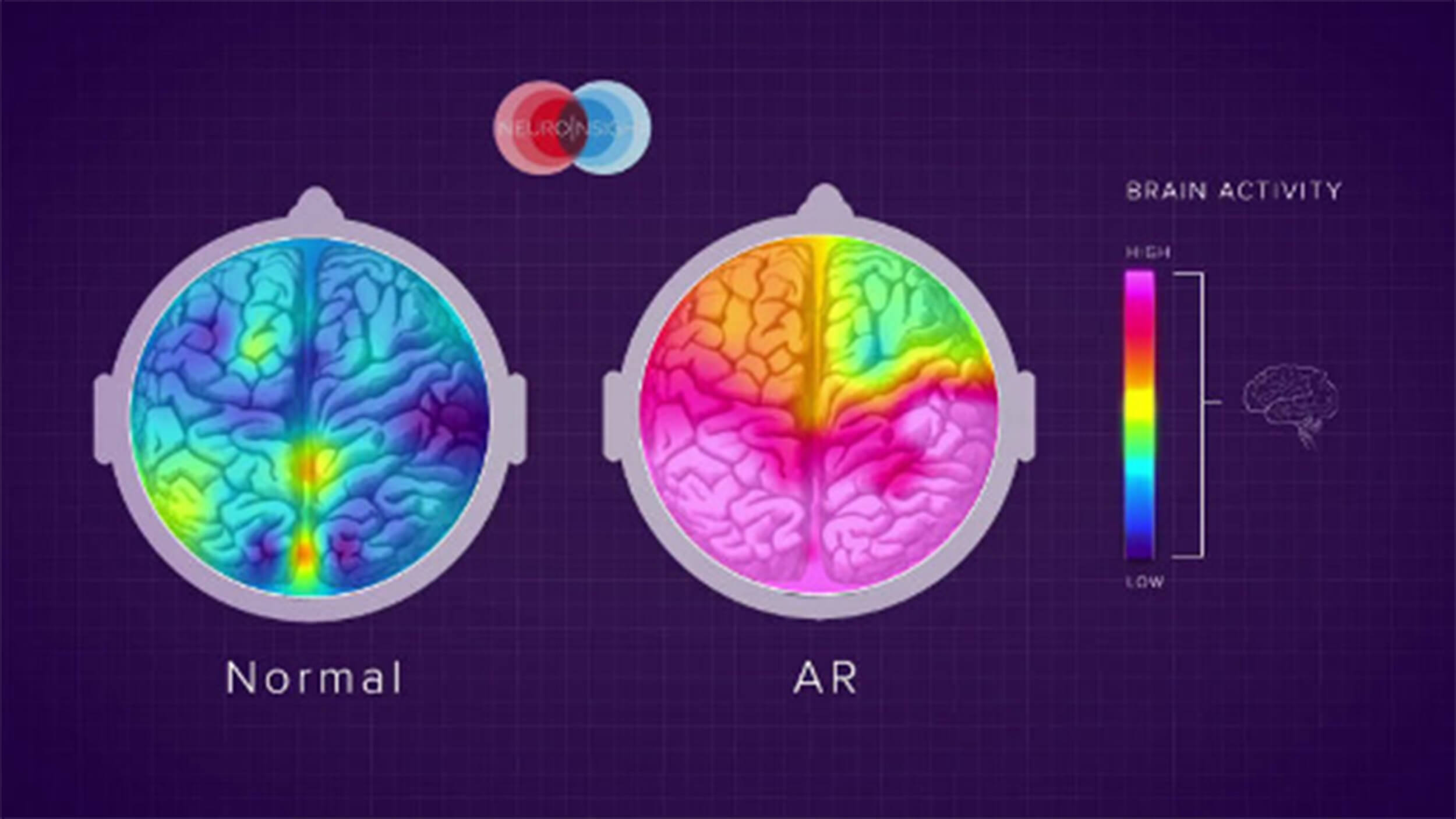
Source: Zappar, How Augmented Reality Affects the Brain
A study from the Boston Consulting Group found that while 9/10 brands are using or plan to use AR in their campaigns, only 1/10 indicate that AR is well integrated into their marketing strategy.
Without a carefully considered approach for deploying Web AR marketing and advertising experiences to your customer, your campaign likely will not see the same results that some other brands are boasting from AR.
At RPR, we work closely with our clients’ marketing stakeholders to understand the objectives of their Web AR campaign and ensure that we’re crafting a Web AR experience and campaign strategy that not only meets but surpasses your goals.
To best achieve your Web AR campaign goals, we map out the customer journey, capturing the voice of the customer to understand how Web AR can solve current pain points and enhance the overall experience.
First, we inventory the target customers’ most common interactions with the brand to determine which ones have the greatest influence on the customer. Then we focus on each interaction that we can impact and influence with Web AR.
Those interactions that have the greatest influence on the customer are often referred to as ‘Moments of Truth’ (MoT). By inserting Web AR into the customer journey during MoTs, you are more likely to see the exponential results that Web AR can unlock.
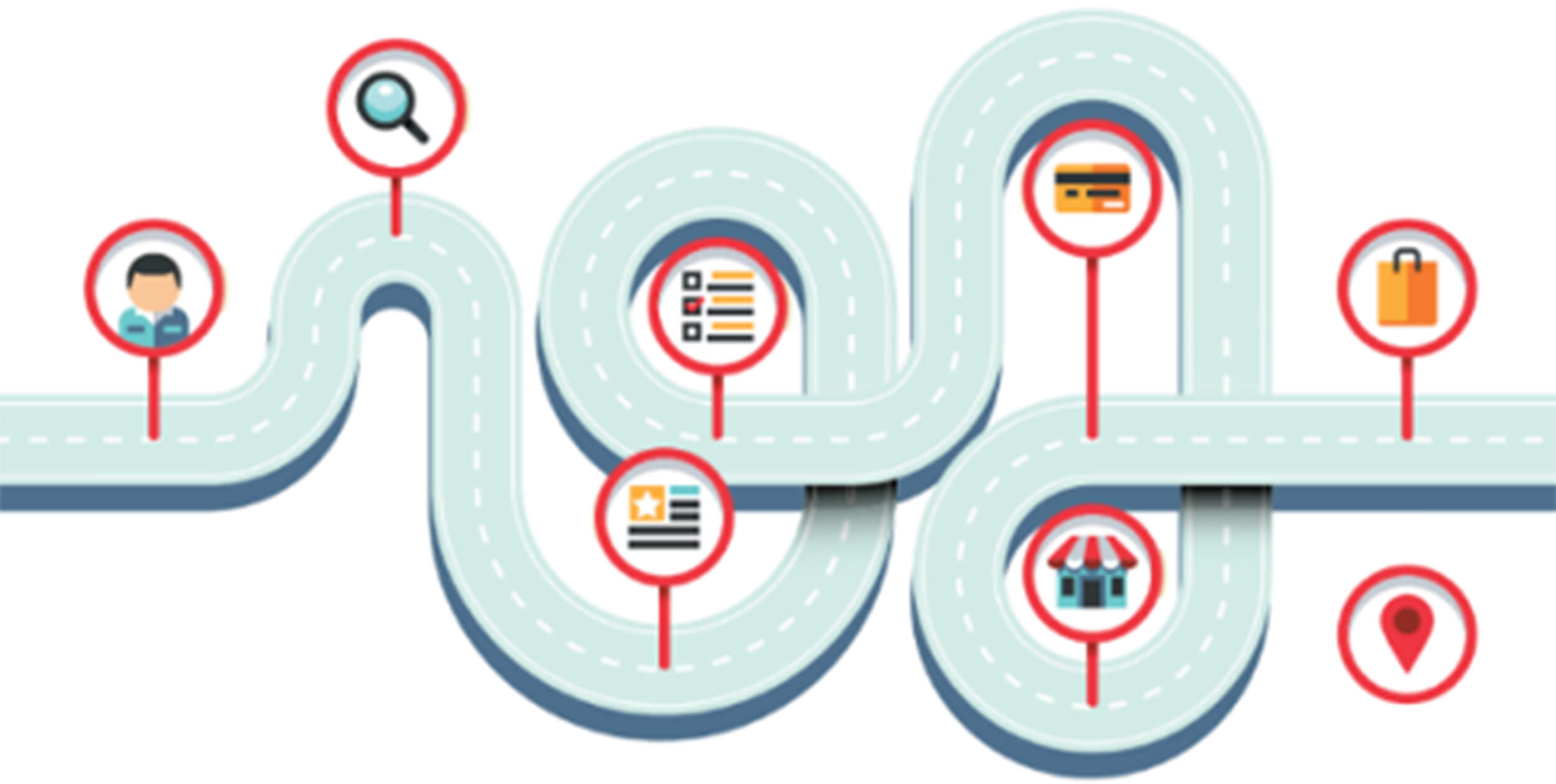
Picture source: ttec
Let’s take, for example, a few of the high-level stages of a typical customer journey such as awareness, shopping, and loyalty. After completing the customer journey map, we can see exactly where Web AR has proven to help brands exceed their target KPIs and ultimately enhance the customer experience.
Keep up to date
Sign up to our newsletter for exclusive updates and content, delivered directly to your inbox.
Awareness
We’ll start at the top of the customer sales funnel with awareness: your customer’s first interaction with your brand.
Your customer first becomes aware of your brand through various channels: social media and digital advertising, physical advertising such as billboards, or by walking into the store. This is what we like to call the “browsing phase.” In this phase, your customer is looking for a product to fulfill a need and is hoping for a brand with mutual values.
As a marketing team, your objectives for the awareness stage might be reaching more of your target customers and increasing engagement with the intent to turn these “browsers” into “buyers.”
If you’re worried about reach, Web AR can be delivered to any of the approximately 3.4B smartphone devices in the market today.
Without the need for an app, Web AR is frictionless and can be deployed across the channels that you are already using to engage your customers as simply as using a hyperlink or a QR code. There is absolutely no need to sacrifice your targeting to deliver a Web AR experience.
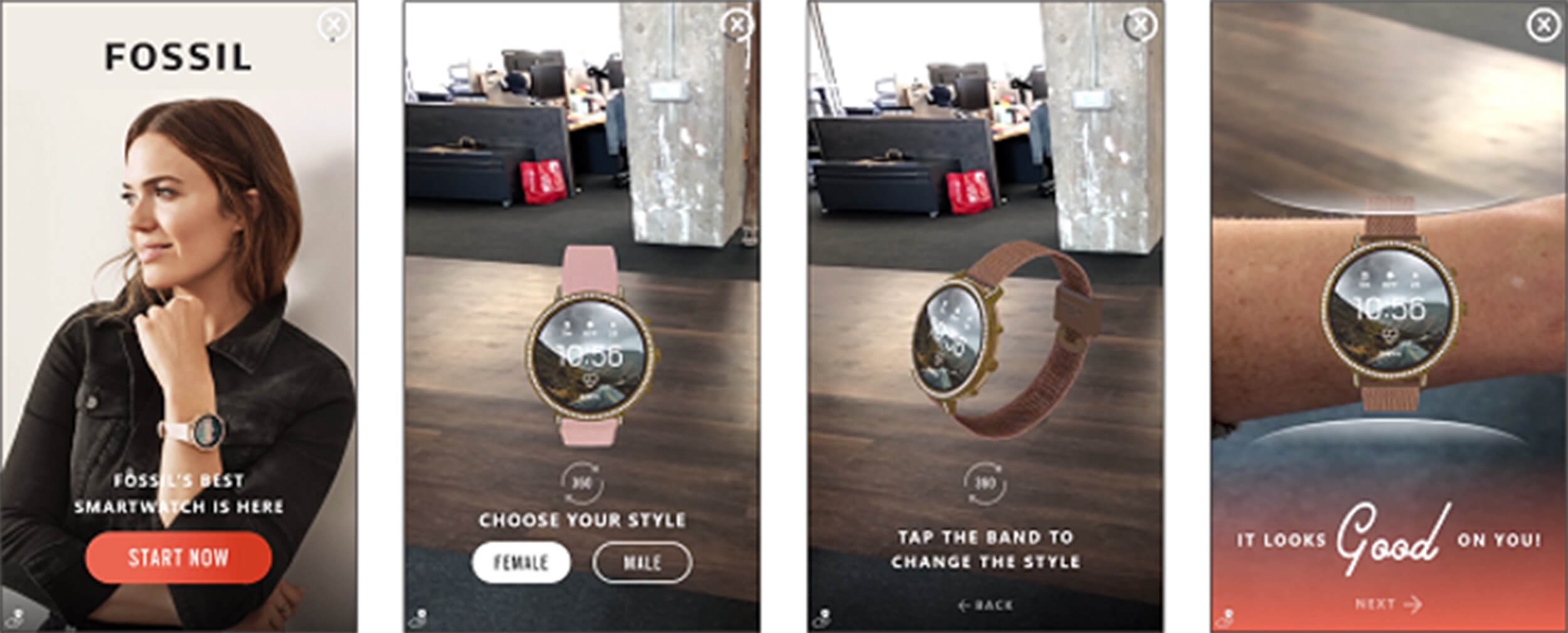
This is a storyboard of how Web AR can be used in digital advertising on Unity’s platform
Source: Unity
Engagement, however, is where AR reigns supreme. According to P&G, during that first MoT with a customer, you have 3 to 7 seconds to convert them from a “browser” to a “buyer.” What is your brand doing to stand out and make sure that engagement counts?
AR marketing campaigns have an average dwell time of 75 seconds, which is 4x that of mobile video. So, considering the importance of that first MoT with a new customer, you’ve just bought yourself ample time to convert him to a “buyer.”Web AR Marketing and Advertising for Shopping
Let’s talk about how AR is already enhancing the shopping experience. From virtual try-ons to unique in-store experiences, AR has a variety of use cases for shopping that will help you increase conversions.
With the online retail market making up 16.1% or about $4.2 trillion of the overall retail market and expected to reach 22% by 2023, brands know they need to create a standout digital shopping experience for their customers. Shopify has found that viewing 3D product visualizations result in a 2x boost (200 percent) in conversions. We can expect to see eCommerce platforms expanding their AR offerings to draw in more customers and increase conversions.
In-store, brands are adapting to the mobile-first customer. 60% of shoppers look up product information with their phones while in-store. With a customer that is already used to pulling out her phone to use apps like Vivino, it’s not too much to ask her to scan a QR code and start an AR experience.
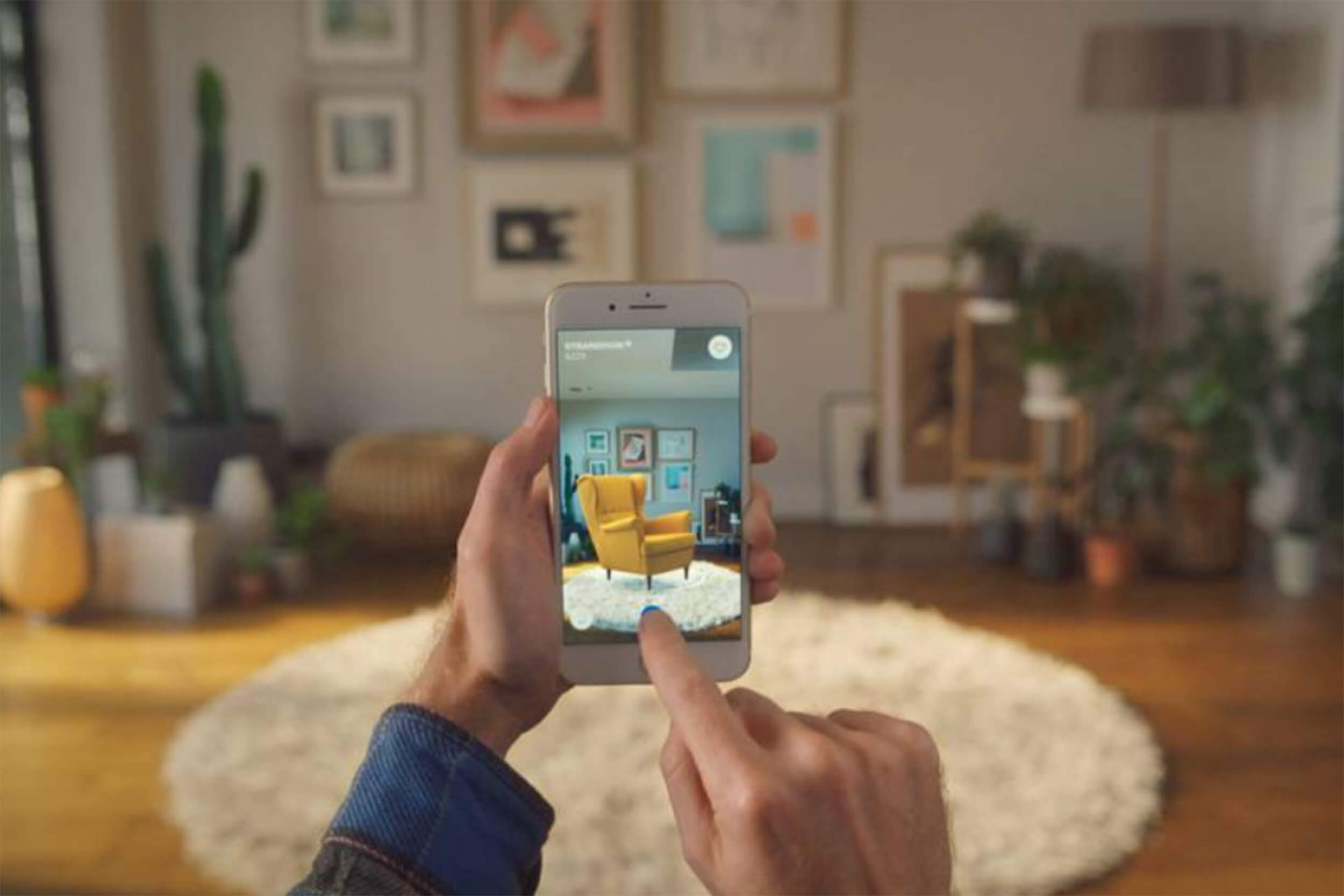
Source: IKEA
Loyalty
If your marketing organization is not thinking about and investing in loyalty, you are doing yourself a disservice. It costs about 5x more to acquire a new customer than it does to retain an existing customer. Furthermore, your success rate of selling to an existing customer is 60-70% compared to 5-20% with new customers.
Fortunately, AR presents a significant opportunity for loyalty and enhancing the experience of your existing customers as well. For many organizations, email marketing continues to be the most tried and trusted form of digital marketing. While AR, once again, is seeing disproportionate results through this channel.
Virgin Holidays, for example, ran an AR-enabled email campaign that saw a 40% increase in email rates and a 75% increase in click-through-rates (CTR), a key indicator for engagement.
In the spirit of reimagining antiquated loyalty channels, how about those plastic gift cards that sit in your kitchen drawer never to be used? At RPR, we’ve helped brands transition to exciting AR gifting experiences that enable their customers to simply purchase and send an AR gift to friends and loved ones.
With AR gifting and our proprietary ‘photogrammetry’ process, your customers can send photo-realistic, 3D representations of the same products you sell in your store, digitally wrapped up in custom wrapping paper and accompanied by your personalized video message.
We can even transport your customers to a 1-to-1 virtual representation of your stores, showrooms, or restaurants.
AR ads are already starting to stick, and the technology is stepping into an exciting stage of viability and adoption. The next advancement that will push forward the ubiquity of AR ads will be native AR ads on any of the platforms where you currently serve ads.
This is already being championed by platforms like Unity, Facebook, or Snapchat who are having successful beta tests. Soon enough, an ad for an IKEA couch will come across your Instagram feed and within a couple of clicks, you’ll be able to place that couch in your room and see exactly how it fits.
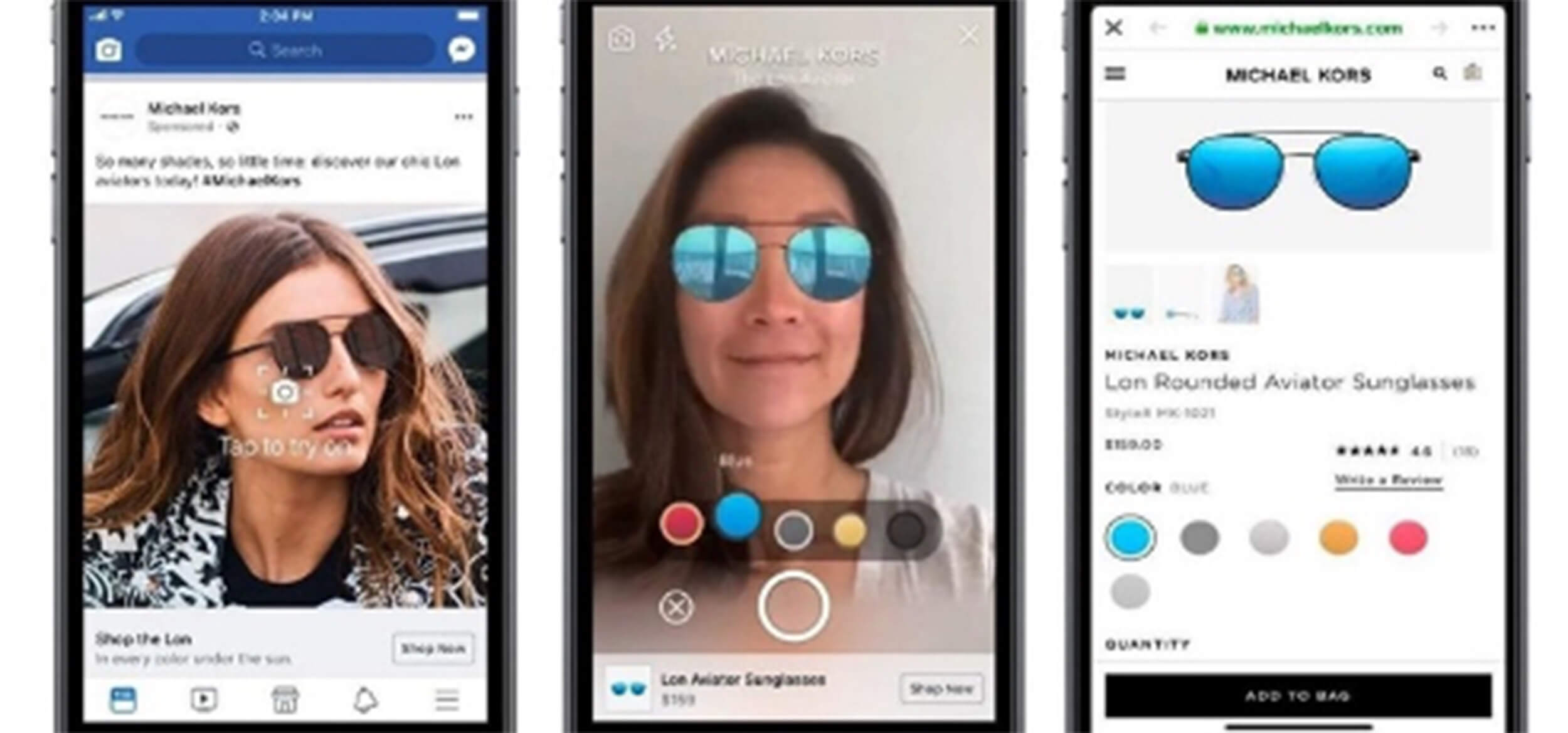
Try on products with Web AR Advertising on Facebook with Spark AR.
Source: Next Reality
Takeaway
Web AR Marketing and Advertising is not just a temporary fad. Across the entire customer journey, it continues to prove its worth by setting record benchmarks compared to 2D ad metrics.
With so much potential for creating your Web AR ad, we realize it can be a bit overwhelming. That is why we always start with your primary objectives and understand your campaign strategy.
At RPR, we have a step-by-step process to help you answer the right questions first and then build the Web AR experience to achieve your needs.
Contact us today for a free assessment of how you can harness the full power of Web AR for your next advertising or marketing campaign.
See Also: Web AR Examples
